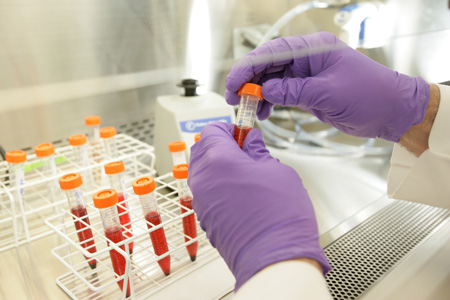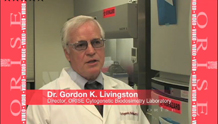
Cytogenetic Biodosimetry
The Cytogenetic Biodosimetry Laboratory is operated as part of ORISE’s Radiation Emergency Assistance Center/Training Site (REAC/TS) and is supported by DOE’s National Nuclear Security Administration and Office of Worker Safety and Health, as well as the U.S. Nuclear Regulatory Commission.
By operating a cytogenetic biodosimetry laboratory, the Oak Ridge Institute for Science and Education (ORISE) is helping the U.S. Department of Energy (DOE) close a critical gap in our nation’s ability to respond to a mass casualty radiation incident.
Should there be an attack involving radiological or nuclear materials affecting a large population, cytogenetic biodosimetry is a proven technique that can be used to calculate the radiation exposure dose of victims. Knowing this information ultimately results in better treatment decisions and better management of valuable response resources.
Cytogenetic biodosimetry uses the human body’s response to radiation as the basis for accurately estimating the radiation dose.
Advantages of cytogenetic biodosimetry:
- The process is standardized and scalable with relatively low costs.
- Provides a refined dose estimate for patients who need aggressive or more specialized medical care.
- Detects or confirms false positives and false negatives.
- Provides an added depth of information to decision-makers and public health officials who assess the magnitude of exposures.
How Cytogenetic Biodosimetry Works
When the energy associated with ionizing forms of radiation is transferred to atoms and molecules in human cells and tissues, the chromosomal DNA is damaged in proportion to the type and amount of energy that is absorbed.
Chromosomal abnormalities, such as dicentrics, can be induced by a radiation exposure. The number of dicentrics is quantified and compared to a known calibration curve in order to derive a dose estimate. This strategy for dose estimation is valid because lymphocytes express the damage regardless of whether they are in or out of the body at the time of exposure.
The process used by ORISE’s cytogenetics researchers provides for the identification and scoring of abnormal chromosomes and nuclei. This allows researchers to quantify DNA damage.
Research to Improve the Technique
Our researchers are continuing to investigate ways to improve the accuracy and speed of cytogenetic analytical methods. Several methods and equipment improvements are underway and indicate great potential for decreasing processing time.

